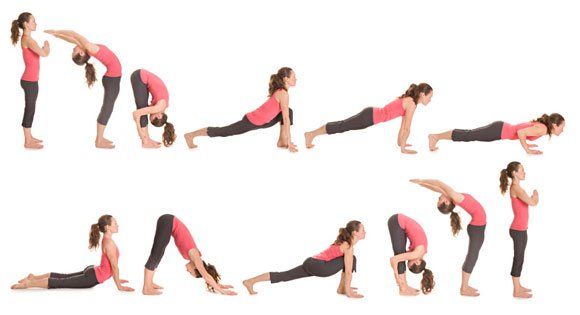Many people lump yoga and Pilates into the same exercise category. While they both emphasize the body-breath connection and utilize low-impact movements on a mat, they are totally distinct practices rooted in very diverse histories.
Read below to help determine which practice is right for you!
Difference #1: The Origin
Yoga originated in South Asia thousands of years ago. It has spread into many different locations and evolved with many different cultures. Today, there are many different types of yoga, including Bikram, Ashtanga, Iyengar, Kundalini, and Vinyasa.
Pilates is named after its creator, Joseph Pilates. When Pilates was a young child, he suffered from several diseases that limited his mobility, so he developed the Pilates exercises in the early 1900s for rehabilitation and strengthening.
Pilates moved from Europe to New York in the 60s and opened his own studio. High profile dancers and ballerinas became attracted to the exercise routine to build their strength, stamina, and flexibility. This dedication from the dance community is what brought Pilates into mainstream exercise trends.
 Credit: mountainlaurelpilates
Credit: mountainlaurelpilates Difference #2: What to Expect in a Class
It’s hard to know what to expect in a yoga class—it depends on many factors including the teacher, studio, class type, and even the day. Be wary of a class simply titled “yoga,” because class types can range from gentle, slow-paced, relaxation sessions to sweaty, powerful workouts.
Some types of yoga, like Bikram and Ashtanga, are more consistent day to day because they have an established sequence of poses. Other types, like Vinyasa or “Flow,” leave the sequence up to the creative freedom of the teacher with an infinite amount of variations and combinations of poses. Make sure to read class descriptions and ask the teacher or studio what to expect before attending a yoga class.
Pilates classes are more consistent day to day. Typically, Pilates exercises are performed lying supine, prone, or on your side. You can expect to do low-impact muscular strengthening and flexibility exercises on a mat with minimal equipment (although some specialized Pilates studios have reformer machines).
There are different levels of Pilates from beginner to advanced, however, unlike yoga, there are no different styles within Traditional Pilates.
 Examples of common Pilates exercises
Examples of common Pilates exercisesDifference #3: The Goal
The diverse variety of yoga poses will work your entire body. In yoga, each pose is complemented with a counter pose to work the opposite muscle group. Teachers will often base a class off of a certain group of yoga poses, e.g. backbends, twists, inversions, arm balances, or standing balances. Props are not necessary for yoga classes, however, many teachers will utilize blocks or straps to help get students into poses.
Pilates exercises are based on the principle that every movement originates from the core. The exercises are typically small, isolated movements, and are repeated in sets. The goal of a class is to focus on spinal alignment and strengthening the core in order to have total body control over your movements.
Joseph Pilates said, “Contrology (Pilates) develops the body uniformly, corrects wrong postures, restores physical vitality, invigorates the mind, and elevates the spirit.”
 Credit: zallapilates.com
Credit: zallapilates.com Different #4: Breath
Breath work in yoga is referred to in Sanskrit as pranayama. Breath is considered a source of energy and life that channels through your body. The goal of breath work is to cultivate and control this fundamental life force.
Yoga classes may utilize many different techniques of pranayama. Some classes encourage breath work throughout the entire class, while others devote a section of the class just to breath work. Most commonly, classes will practice ujjayi (“victorious”) breath throughout the class, matching each pose or transition between poses with an inhale or an exhale. This is a three-part diaphragmatic breath, inhaling and exhaling through the nose while slightly constricting the throat to make the breath audible.
In Pilates, practitioners are encouraged to be aware of their breath throughout the entire class—inhaling through the nose, and exhaling through the mouth. Unlike yoga, there are not different breathing techniques used, nor are specific sections of class devoted to breath work. Rather breathing is a consistent and constant effort.
Difference #5: Spirit
In yoga, spirituality is inextricably intertwined into the practice. This is due to the historical roots of yoga. The Sanskrit word “asana,” has evolved to mean “pose,” however in the Yoga Sutras, Patanjali defines “asana” as “to be seated in a position.”
Yoga poses have evolved from a simple cross-legged pose to sit and meditate, into an infinite amount of standing, seated, arm-balancing, twisting, and back-bending poses. Still, each pose is grounded in meditation. A yoga practice classically ends in Savasana (Corpse pose) for a moment of stillness to meditate.
 Credit: mea.gov.in
Credit: mea.gov.in The slower pace of a Pilates class may have stress relieving effects for many participants, however, Pilates does not create a distinct spiritual experience.
Which to choose?
If you’re still unsure which practice is right for you, try them both! No one is better than the other. What is right for you is an individual choice depending on your goals, likes/dislikes, and even your mood that day.



